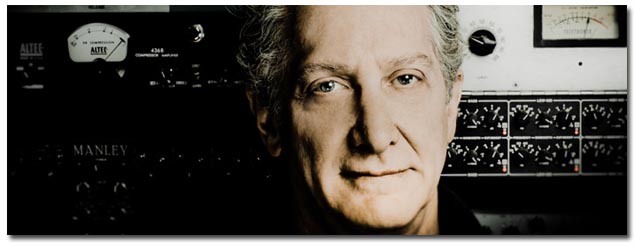Michael Brauer has enjoyed an illustrious 30-year music career, mixing chart-topping albums by renowned artists including Coldplay, Aretha Franklin, Bob Dylan, and The Rolling Stones. Last month he nabbed the coveted Best Engineered Album Grammy® Award for John Mayer’s Battle Studies, the latest in a long line of accolades for this A-list mixer. Long revered for the storied sonic approach he calls “BRAUERIZE”, Brauer holds court over an amperage-busting, NASA-like collection of vintage outboard gear at New York’s Electric Lady Studios. But even with access to some of the world’s most prized electronics, Brauer delegates a large portion of his signal processing duties these days to Universal Audio’s UAD-2 Powered Plug-Ins. “They have the sound I’m looking for,” he says. “And for me, it’s all about sound.”

Brauer sat down with us during a rare hole in his busy mixing schedule to talk about his history and the mystery that makes effects processors by Universal Audio some of his most celebrated sonic tools.
Congratulations on your recent Grammy win for John Mayer’s Battle Studies. You’ve worked on Grammy-winning albums in the past, but this one, by your own admission, has special significance. Why?
Well, as an engineer, it’s a tremendous honor, as it’s the direct result of people voting for the job that you’ve done. They’re listening to it and judging the sound of it, not just enjoying it for the sake of entertainment. So for me, the engineering award is one that actually celebrates what I do. It’s kind of like the Holy Grail for many of us on this side of the glass.
Battle Studies is an amazing sounding album. It strikes a perfect balance between being modern and fresh sounding, while paying homage to the funky sounds of yesteryear. Can you name a specific track that UA gear helped elevate?
Sure. There’s a tune on the album called “Who Says?” that I first tried mixing using a modern, multi-buss compression scheme. When John heard it, he thought it sounded big and ‘radio-ready,’ but he thought that that track, in particular, needed to be stripped down and sound more honest. He was looking for an earlier-sounding approach to mixing the song.
I thought about it, and realized that he was right — that making the mix more present took away some of its honesty. So I dropped the multi-buss mix approach and went back to the route I had originally started on, which was using one stereo compressor (a Neve 33609), going into a couple Pultec EQ’s, and putting the vocals through my hardware UA LA-3A — which is just a great-sounding, simple compressor. When John came back-in about a half hour later, he said, “That’s it.” We were done.

Read the interview in its entirety on Universal Audio’s website blog. Learn more about the award-winning Universal Audio Hardware.
